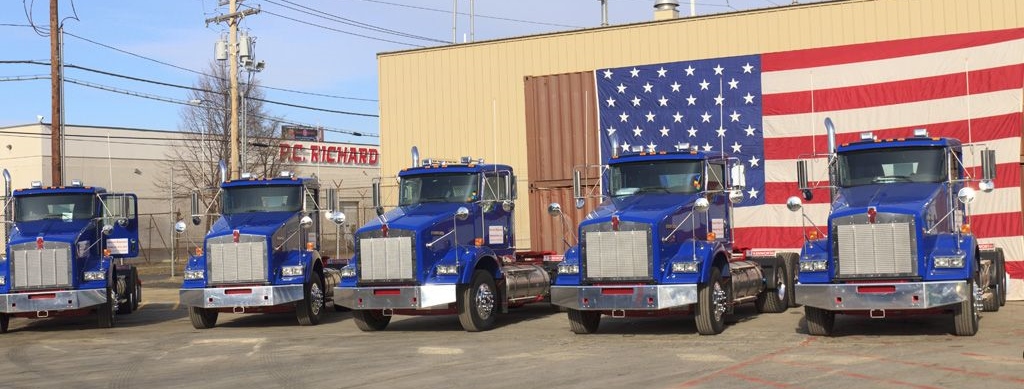
Heavy-duty vehicle idling, or running a vehicle’s engine while it is not in motion, occurs for a number of reasons, including temperature control during required rest stops, powering electronic equipment, and to avoid cold starting the vehicle. According to Argonne National Laboratory (Argonne), more than 6 billion gallons of diesel and gasoline fuel are wasted by vehicle engine idling—with half from medium- and heavy-duty vehicles alone. Argonne estimated that a heavy-duty long-haul truck generally idles around 6 hours per day, or 1,830 hours per year. Not only does this wasted fuel cost more than $20 billion a year, but it also results in increased emissions of air pollutants, such as oxides of nitrogen, carbon monoxide, and particulate matter. This is particularly an issue for school buses, as these emissions can have harmful health impacts on children. A number of states, counties, and municipalities have implemented vehicle idling restrictions and regulations to address this issue.
Idle reduction technologies afford drivers with the same comforts and services offered by engine idling, but are much more fuel efficient. The U.S. Environmental Protection Agency’s (EPA) SmartWay Program and the U.S. Department of Energy (DOE) have evaluated a number of idle reduction technologies for heavy-duty vehicles to identify their fuel reduction benefits. There are two main categories of idle reduction technology: onboard equipment and truck stop electrification (TSE) sites.
Onboard Idle Reduction Equipment
Onboard idle reduction equipment is installed directly on the vehicle. This technology can help reduce idle time at any location, including roadsides, delivery sites, and truck stops. Examples include auxiliary power units (APUs), which are small diesel-powered generators that provide power for temperature control systems and electronic devices, and coolant heaters, which keep the vehicle’s engine warm to avoid cold starting. Other technologies include cab or bunk heaters, engine recovery systems, storage air conditioners, and automatic engine stop-start controls. For a complete list and detailed descriptions of available onboard idle reduction equipment, please refer to the Alternative Fuels Data Center (AFDC) Onboard Idle Reduction Equipment for Heavy-Duty Trucks and Argonne’s Reducing Vehicle Idling pages.
Truck Stop Electrification
TSE sites, also referred to as electrified parking spaces (EPS), allow drivers to power temperature control systems and other appliances using equipment provided at the site. Note that TSE can reduce direct vehicle emissions and fuel consumption, although there may be indirect emissions impacts associated with the source of electricity used to power the equipment. There are two types of TSE: single-system electrification and dual-system electrification.
Single-system electrification is comprised of off-board equipment that is stationed at the truck stop. Drivers parked at the site have access to services such as internet, heating, and air conditioning. Dual-system electrification, also known as “shorepower,” requires both onboard and off-board equipment because trucks must be able to plug into the external electrical outlets provided. Trucks must have equipment that is compatible with these electrical outlets.
Currently, there are more than 100 TSE sites in operation across the United States, comprising a total of nearly 2,600 parking spaces. For a map of TSE sites, please see the AFDC TSE Locator.
Market Availability Resources
The number of drivers that utilize idle reduction equipment, as well as the portfolio of available technologies, continues to grow. For up-to-date information about available idle reduction technologies for heavy-duty vehicles, see the following resources:
- EPA’s SmartWay Idling Reduction Technologies (IRTs) for Trucks and School Buses
- This page includes detailed information about the verification procedure, as well as a list of SmartWay verified idle reduction technologies for trucks and school buses.
- DOE’s National Idling Reduction Network News
- Each month, the National Idling Reduction Network releases a newsletter, including information about fleet adoption of idle reduction technologies, new available technologies, funding opportunities, and relevant regulatory news. Check out the September 2016 newsletter for notable news from heavy-duty idle reduction technology manufacturers, including a solar-powered idle reduction system.
- DOE’s Clean Cities IdleBox Toolkit
- The IdleBox Toolkit provides outreach materials and educational resources on vehicle idle reduction, including presentations, fact sheets, and other publications specifically for heavy-duty vehicles.
- North American Council on Freight Efficiency’s (NACFE) 2016 Annual Fleet Fuel Study
- NACFE conducts an annual survey of Class 8 truck fleets to better understand heavy-duty fleet adoption of idle reduction technologies and practices. Check out the 2016 study, which covers trends in idle reduction technology, based on data collected from 15 North American fleets about their use of 69 different fuel-efficient technologies.
- Clean Cities Technical Response Service Team
- technicalresponse@icfi.com
- 800-254-6735
